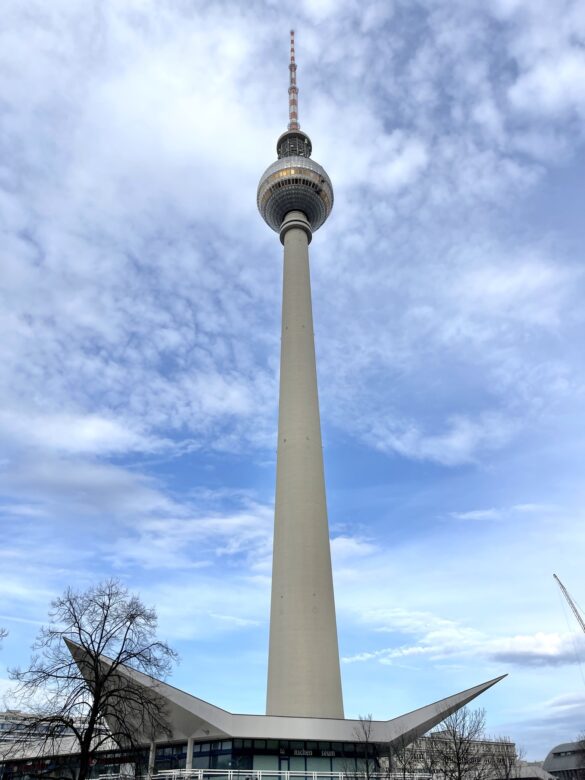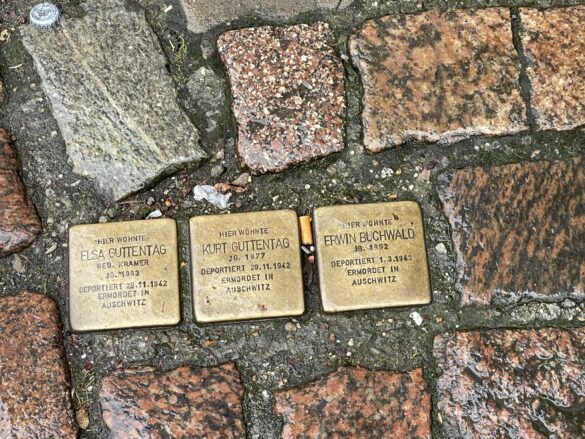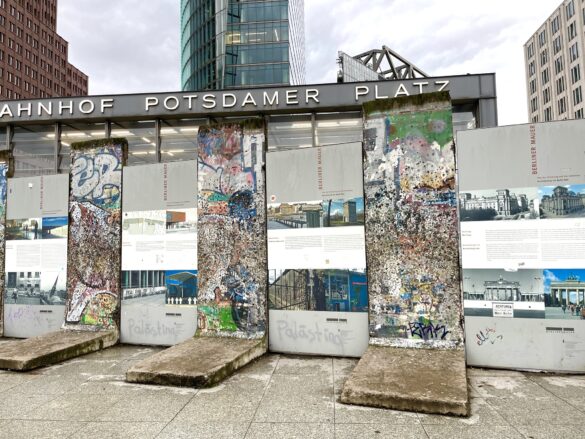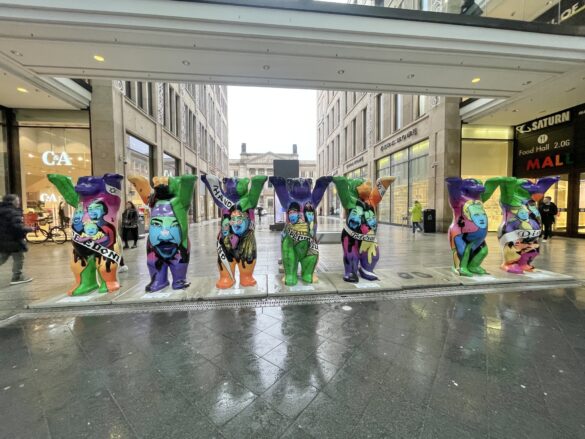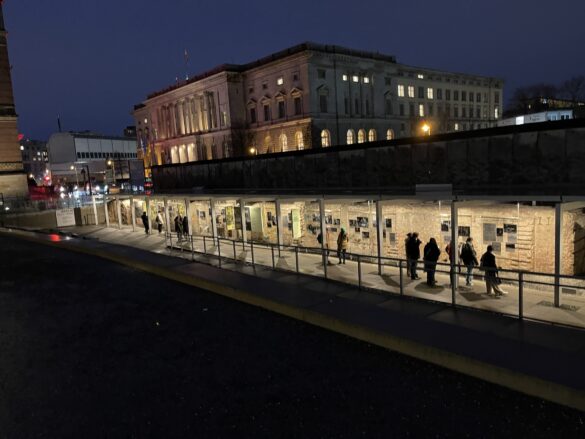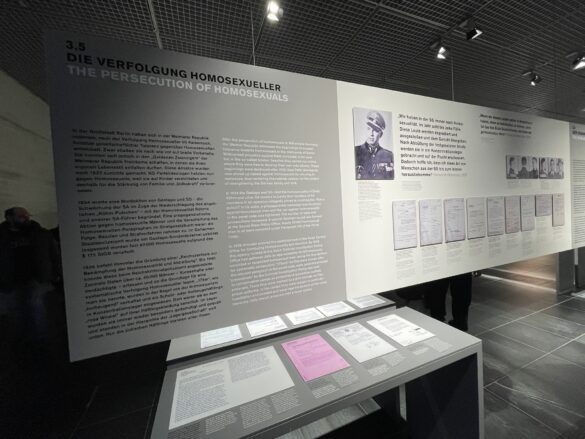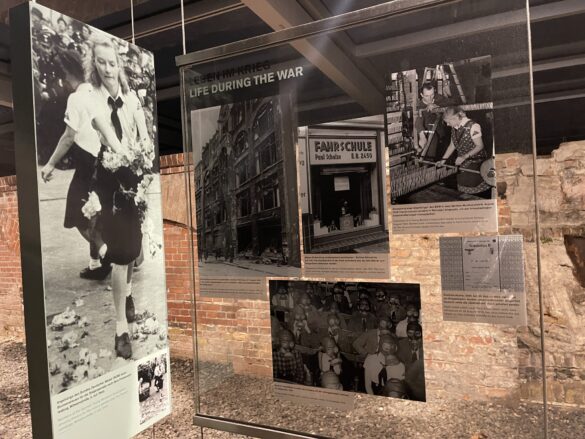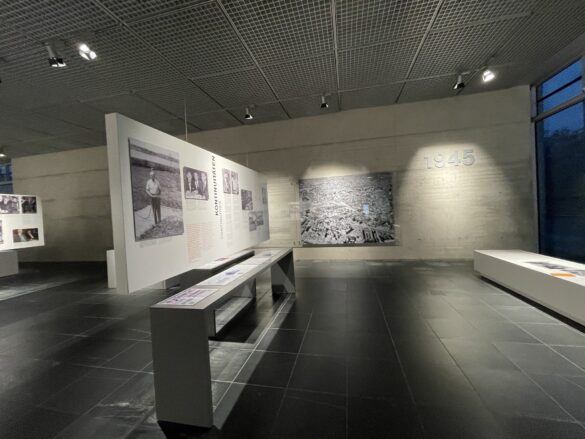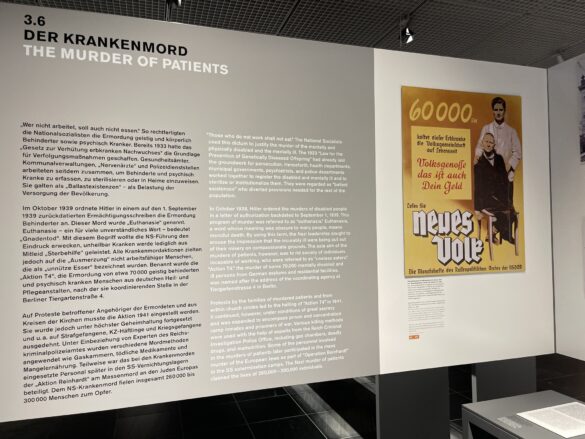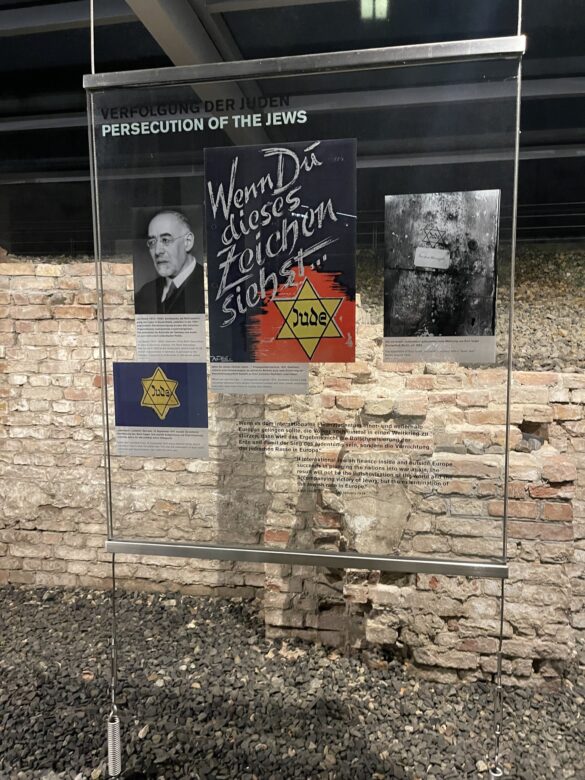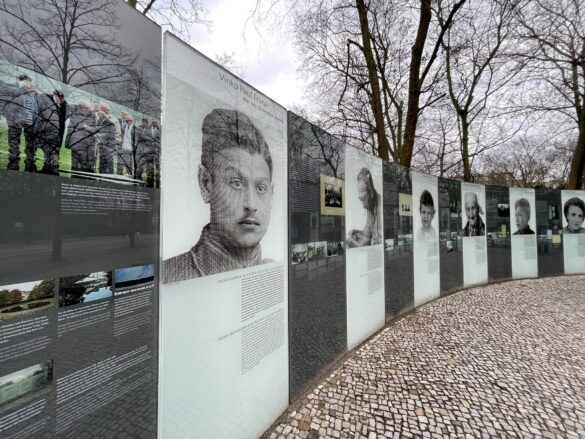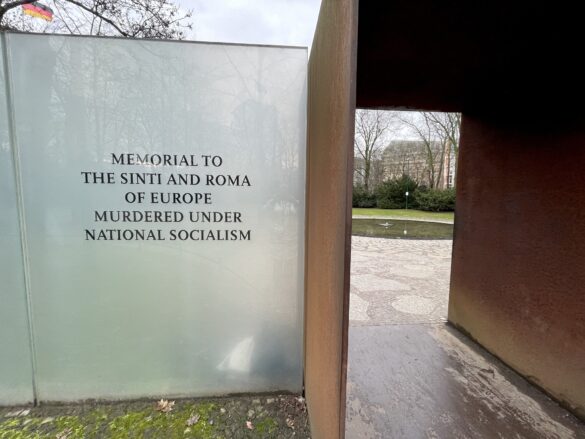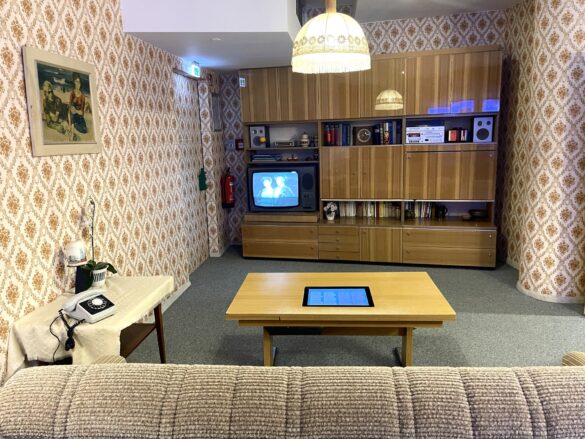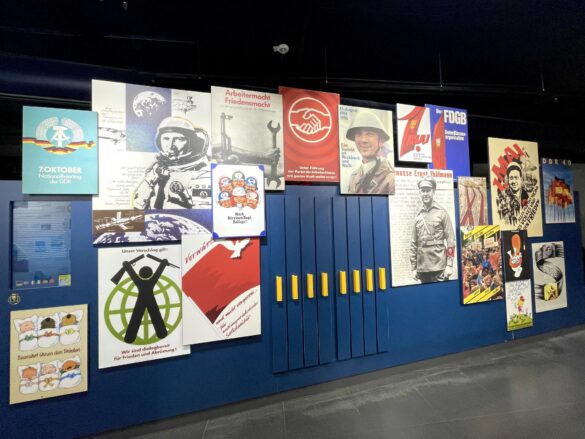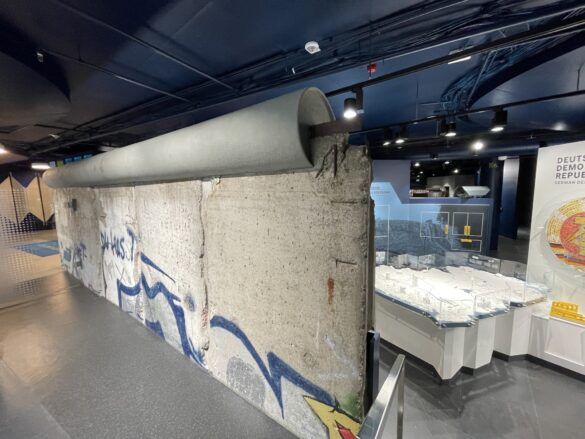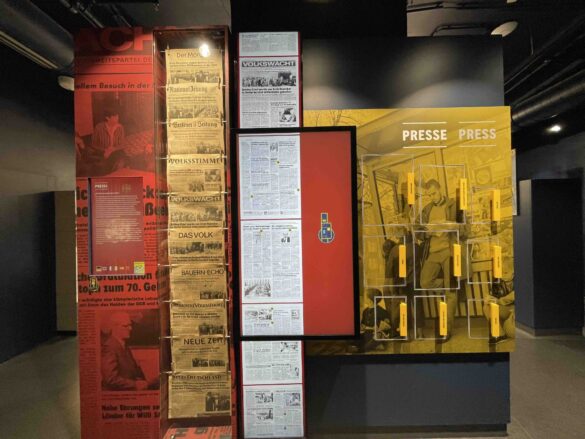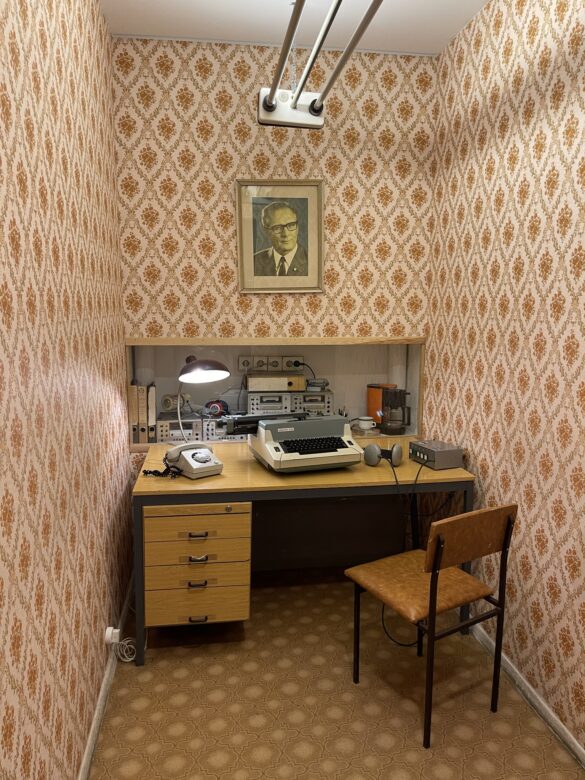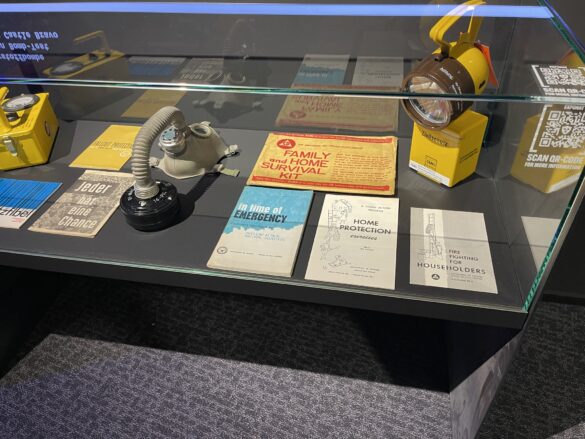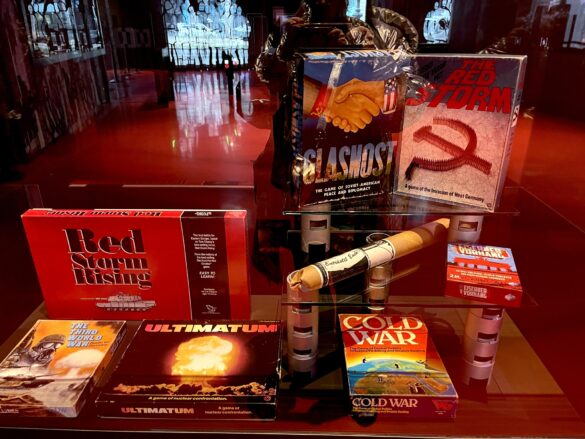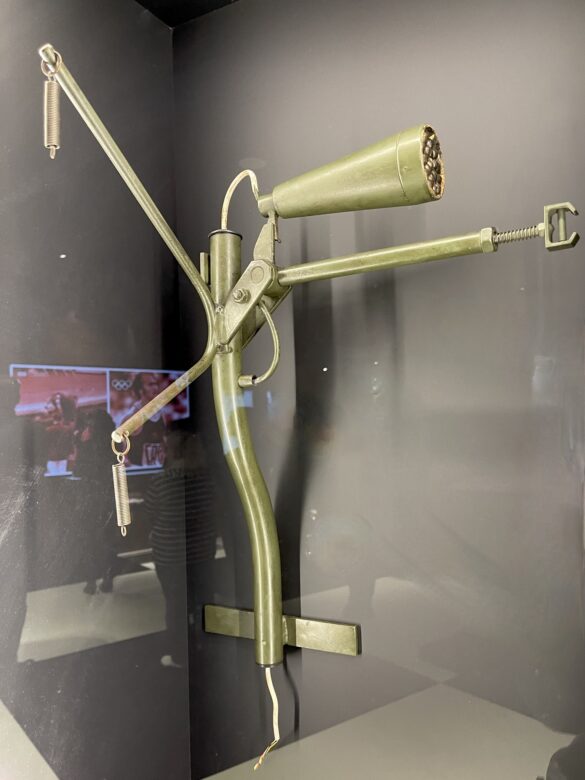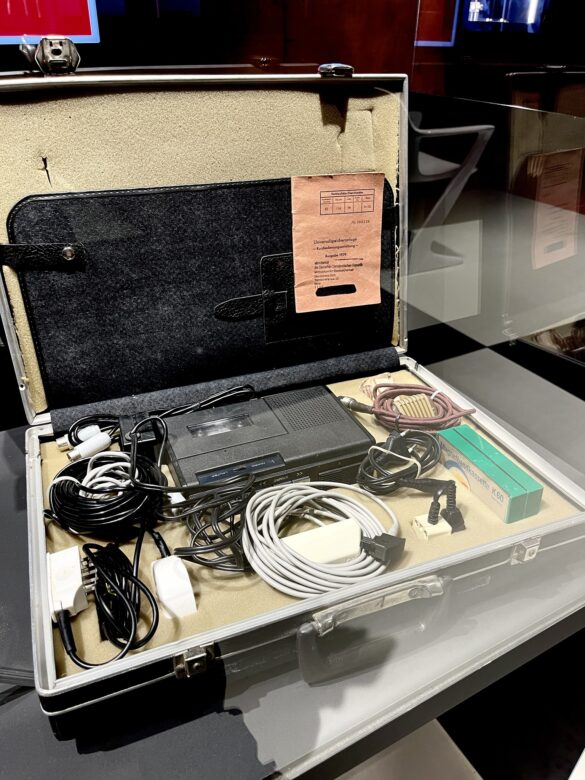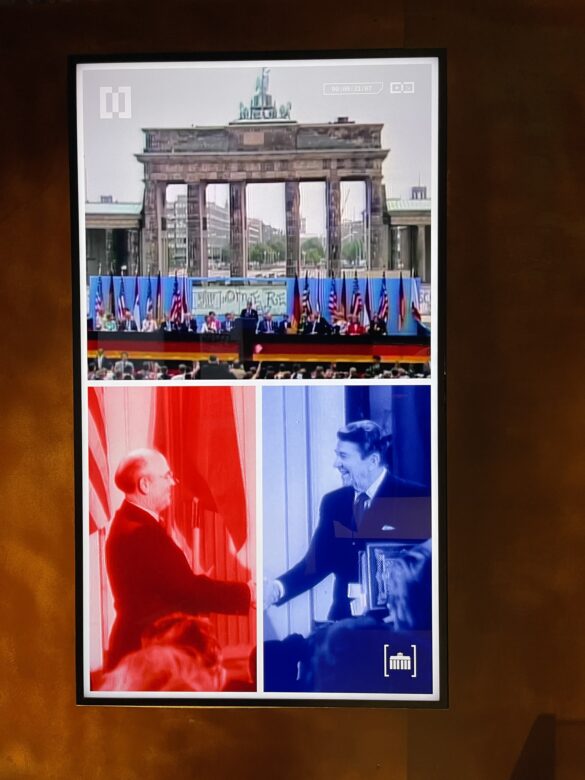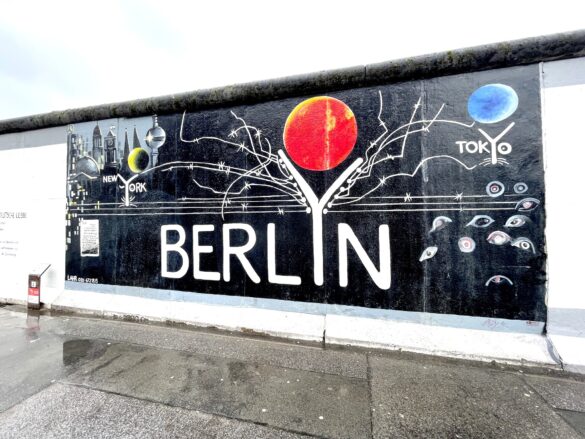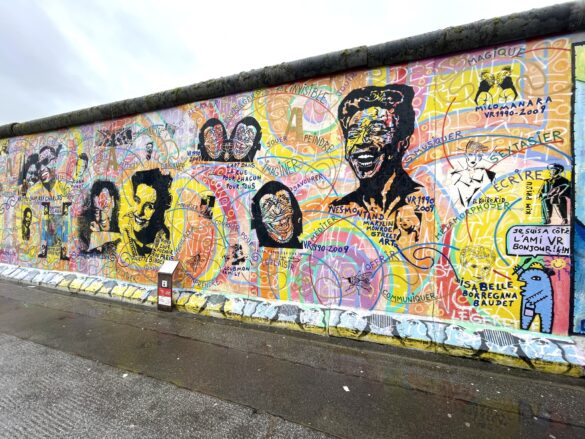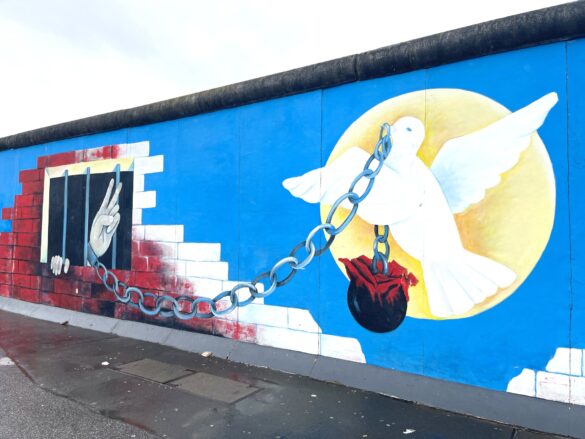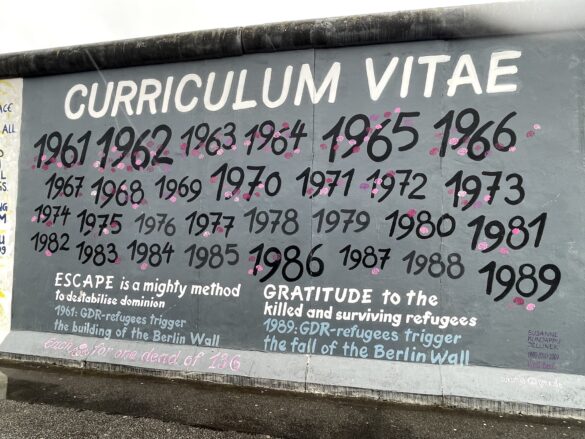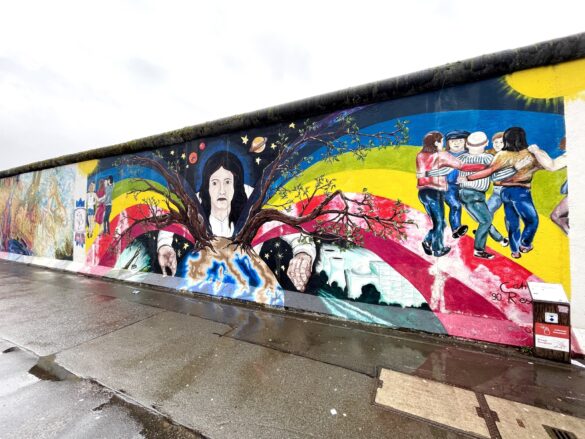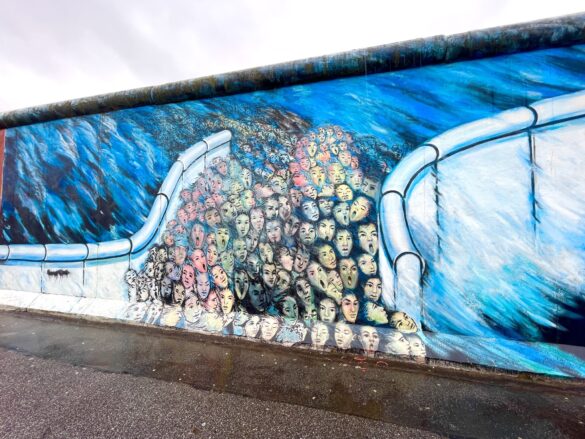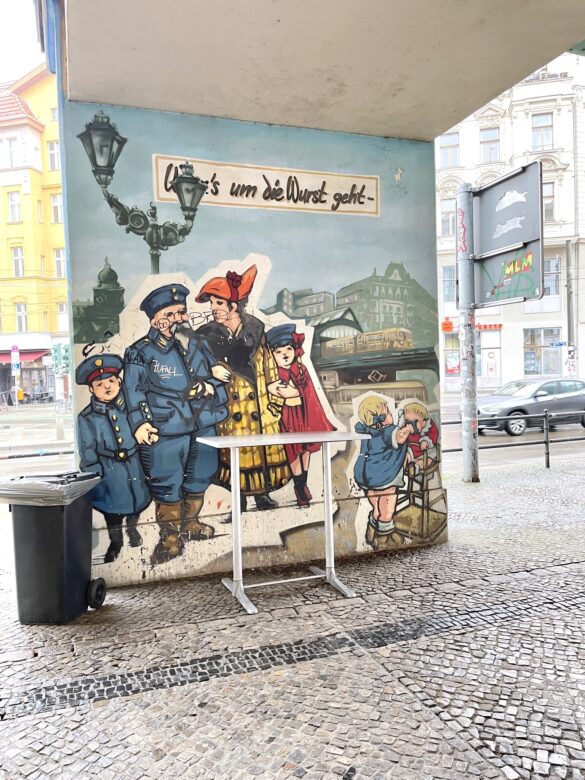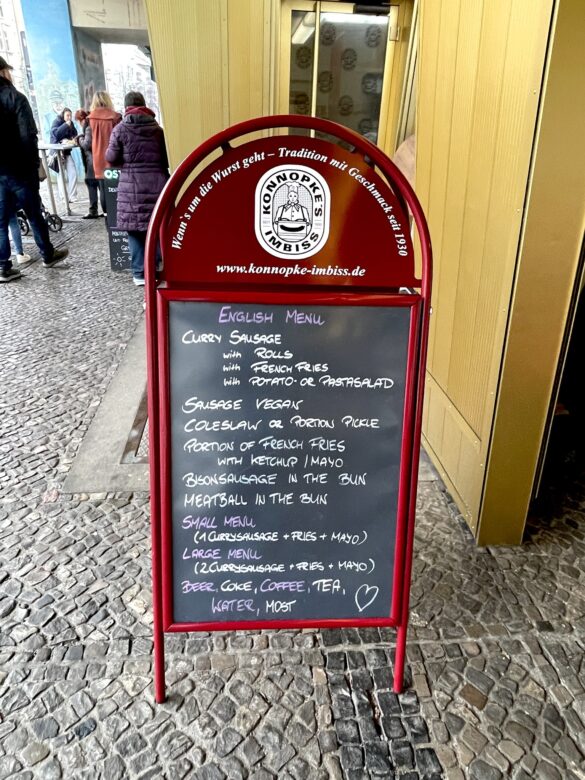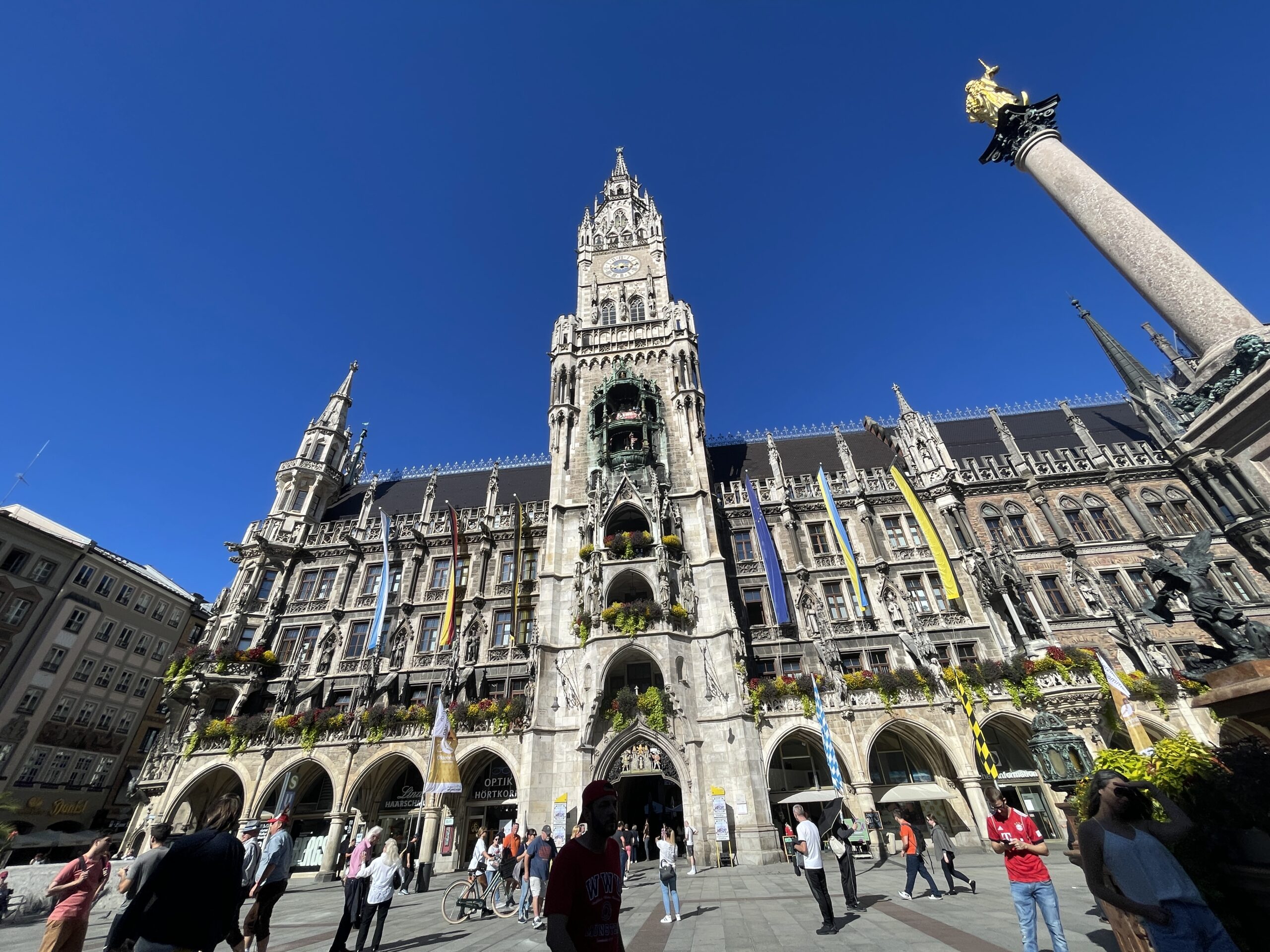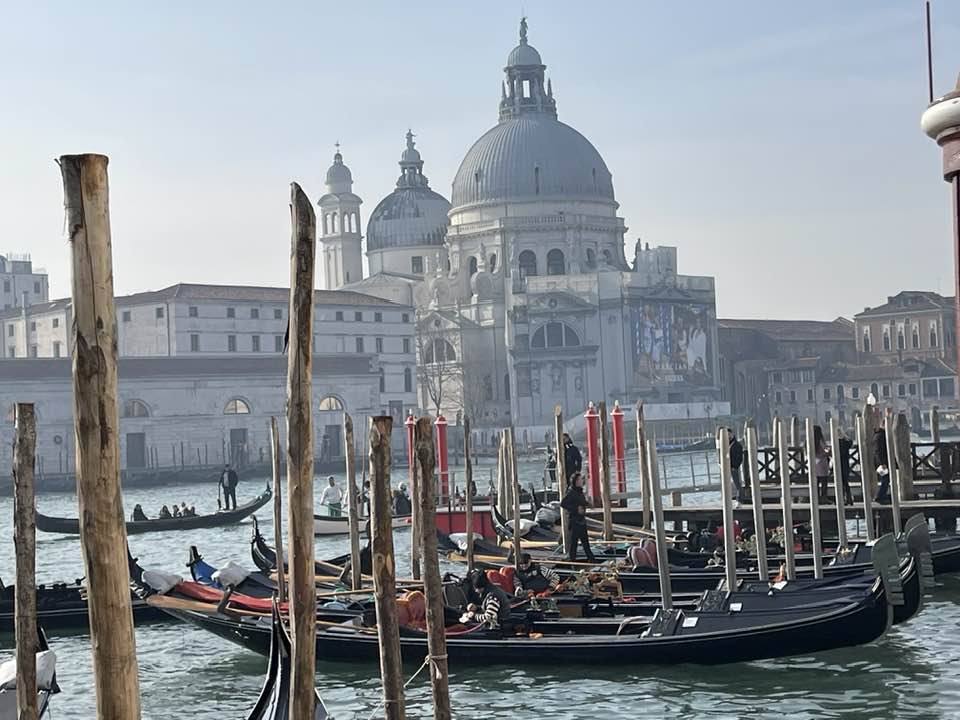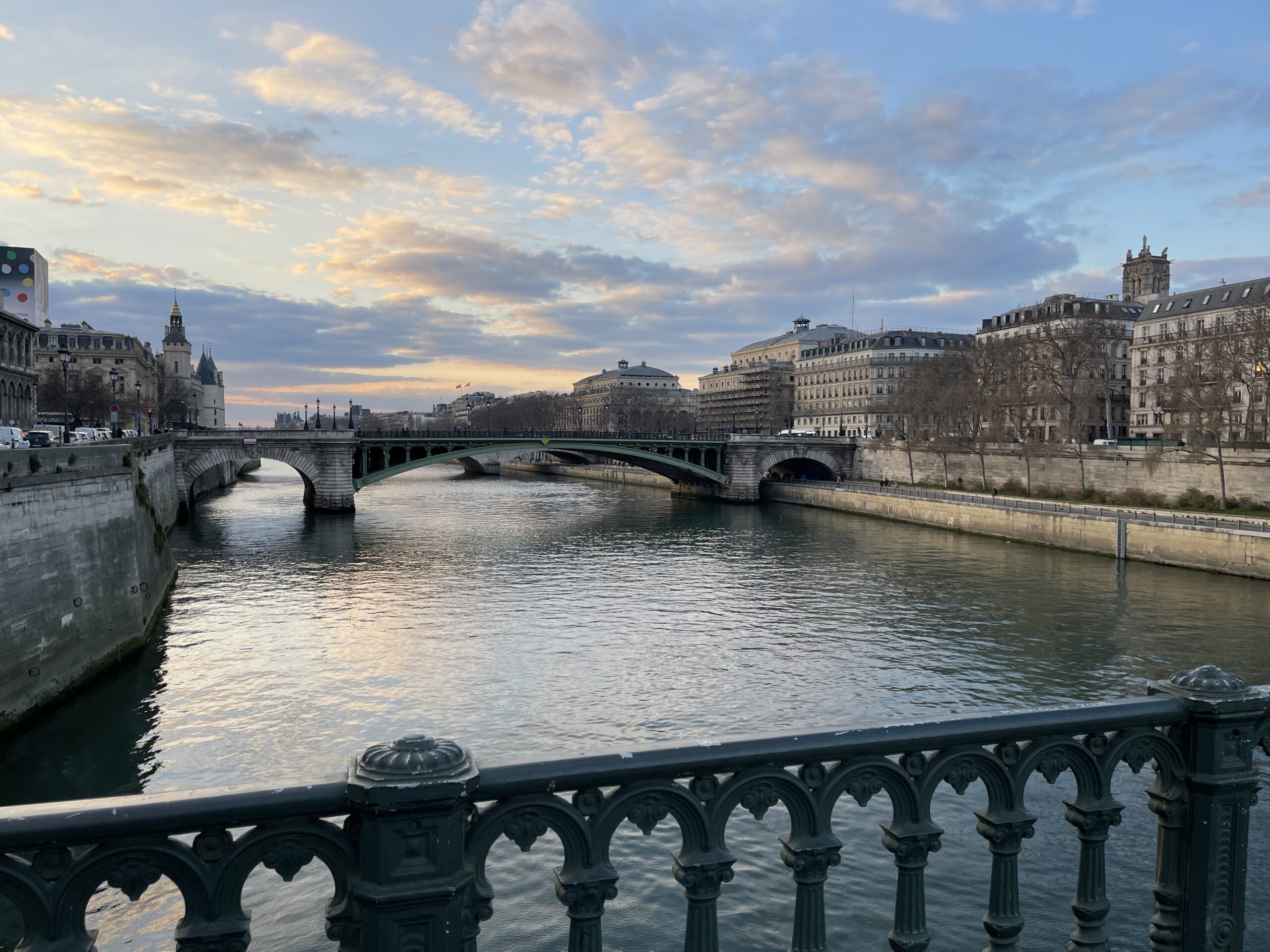A recent trip to Berlin for a conference left me with several time blocks to explore the city. I have been to Berlin several times over the years. I’ve seen the city change drastically over the last 25 years. From when Potsdamer Platz was the largest construction site in the world, to when the city became an oasis for fleeing New Yorkers. So whatever Berlin’s latest manifestation is, Tracing Berlin’s Turbulent Past, the layers of history are fascinating and tragic. They hold both allure and intrigue.
Below are several places I explored. Some new to me. Some not. All provide a trail for tracing Berlin’s turbulent past, roughly in chronological order.
THE TOPOGRAPHY OF TERROR DOCUMENTATION CENTRE

You need some time here if you want to get the full experience. Located in the former Gestapo, SS, and Reich Security Main Office, the museum has indoor and outdoor sections.
The major focus of the permanent exhibition is on the central institutions of the SS and police in the Third Reich and the crimes they committed across Europe.
The exhibition is in five chapters:
- The National-Socialist seizure of power
- Institutions of terror (SS and police)
- Terror, persecution, and mass murder in the Reich
- The SS and the Reich Security Main Office in the occupied territories
- The end of the war and post-war period
Guided tours are available and the museum is set up as a place of information and learning.
MEMORIAL TO THE MURDERED JEWS OF EUROPE
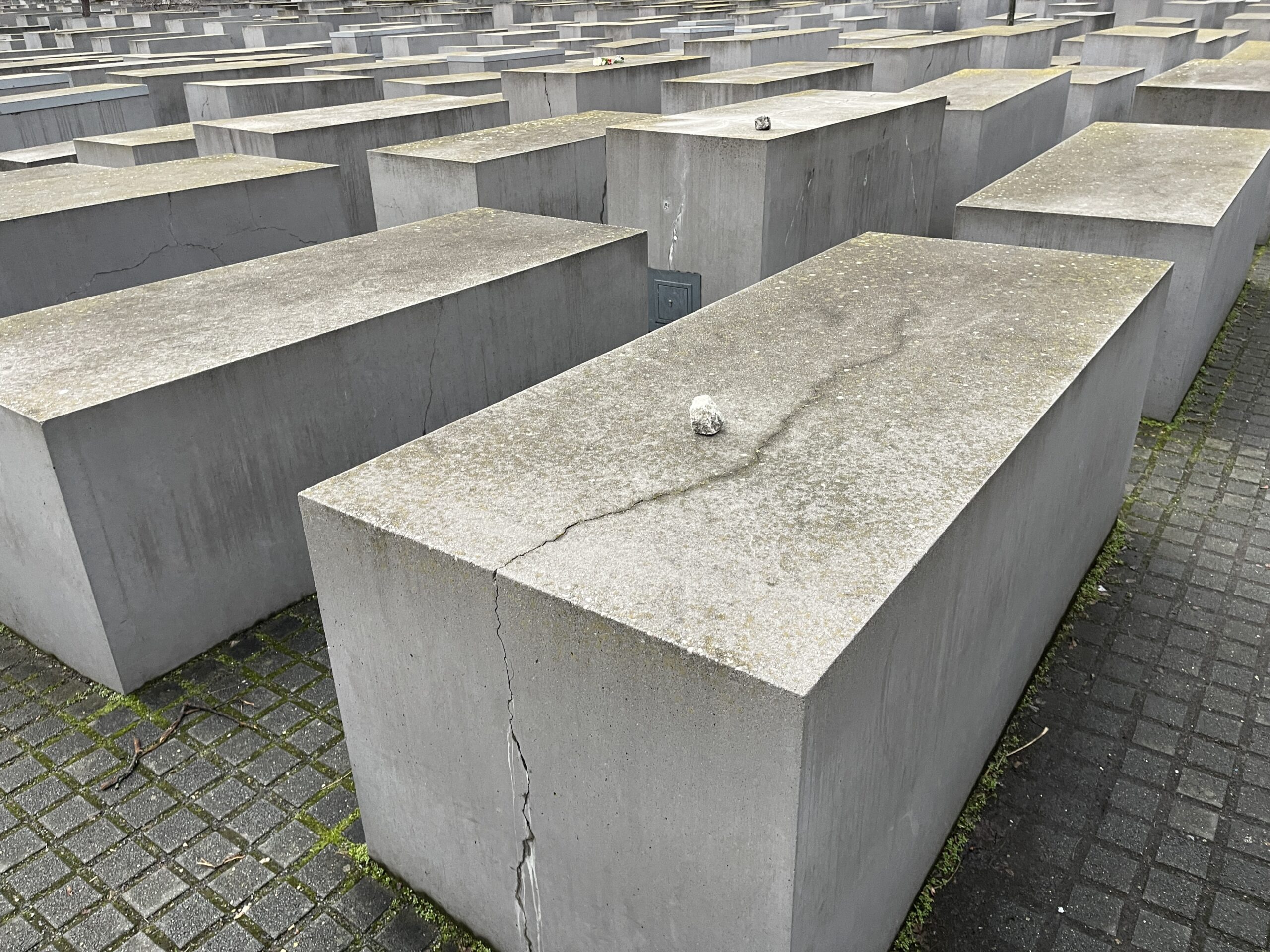
This is Germany’s central Holocaust memorial. The monument showcases the Field of Stelae designed by Peter Eisenman. Also, there is an underground Information Centre. The structure is walkable and can be entered from all sides. Admission is free.
“In our monument there is no goal, no end, no way in or out. The time of the experience of the individual does not grant further understanding, because understanding is not possible.”
- – Peter Eisenman

MEMORIAL TO THE MURDERED SINTI AND ROMA OF EUROPE – ROUTE OF THE S21
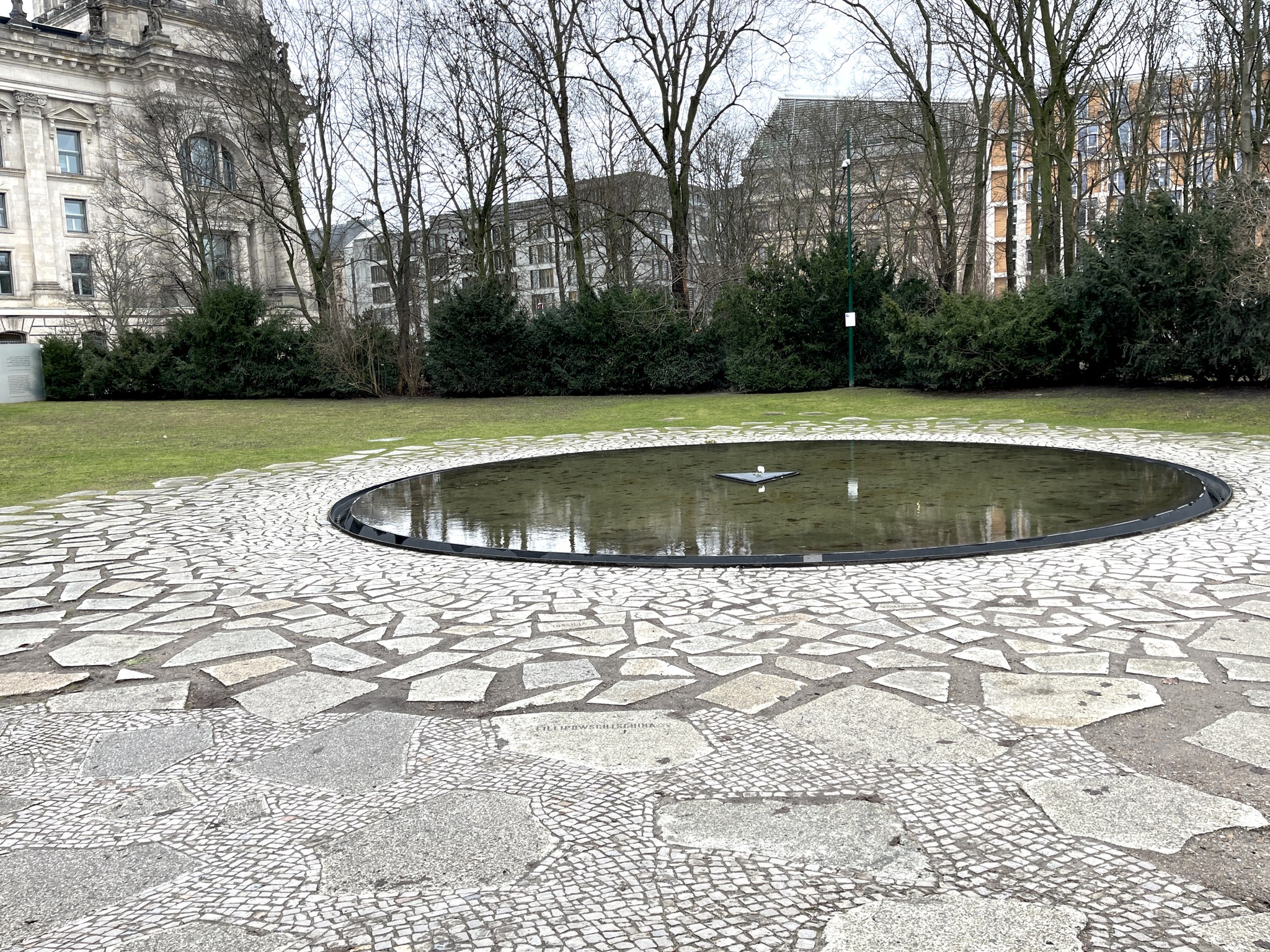
The monument commemorates the memory of the 220,000 – 500,000 people murdered in the Porajmos – the Nazi genocide of the European Sinti and Roma peoples.

Irregular stone slabs set into the lawned area around the water feature the names of 69 of the sites where Sinti and Roma were persecuted and murdered.
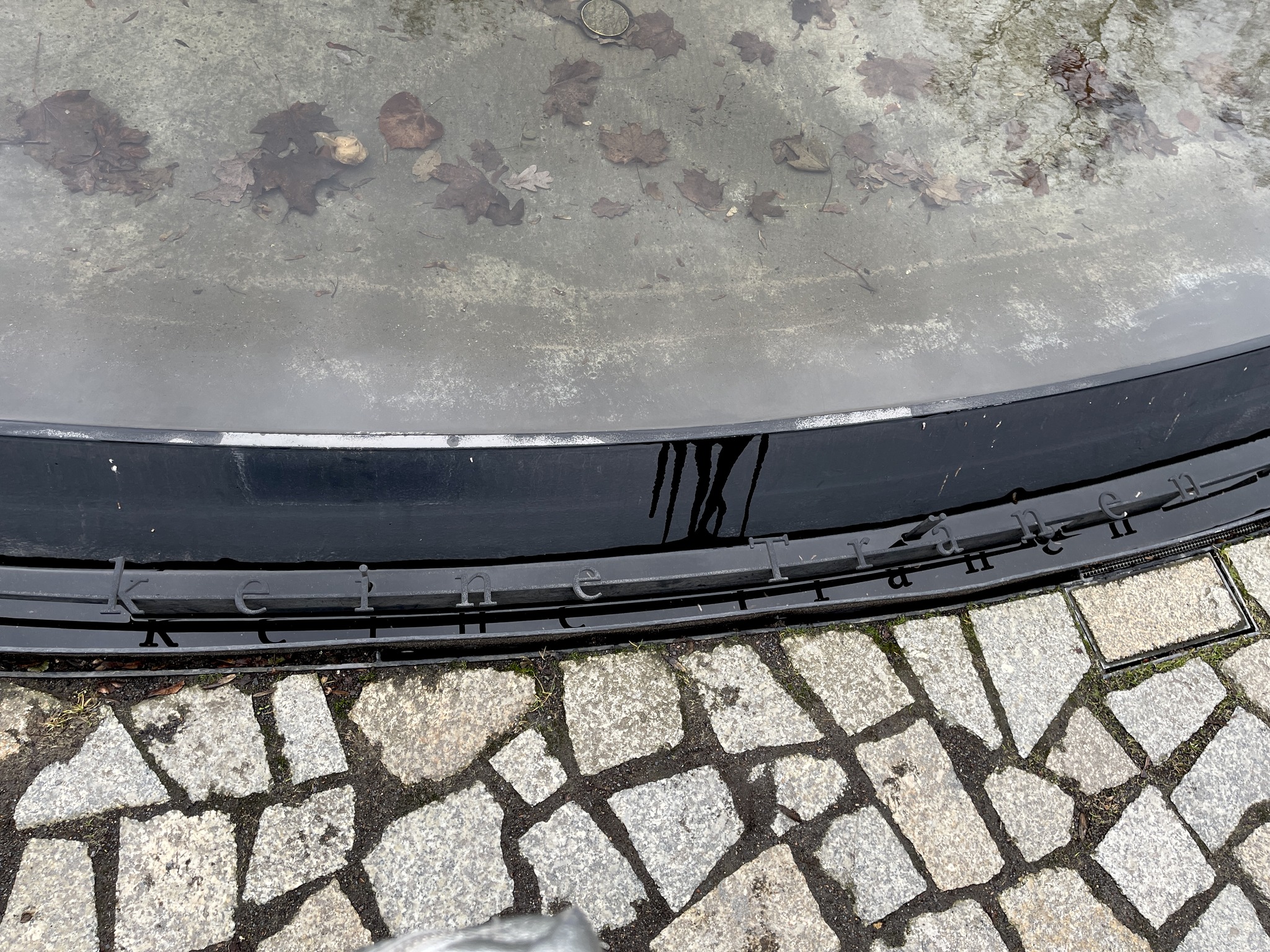
The metal rim around the fountain basin contains the poem Auschwitz by the Italian composer and lyricist Santino Spinelli.
 This flower is replaced with a fresh bloom at 1 pm every day.
This flower is replaced with a fresh bloom at 1 pm every day.
I could not tear myself away from reading the individual victims’ stories profiled on the memorial. This is a thoughtful and well-done commemoration. So worthy of taking the time to explore.
DDR MUSEUM
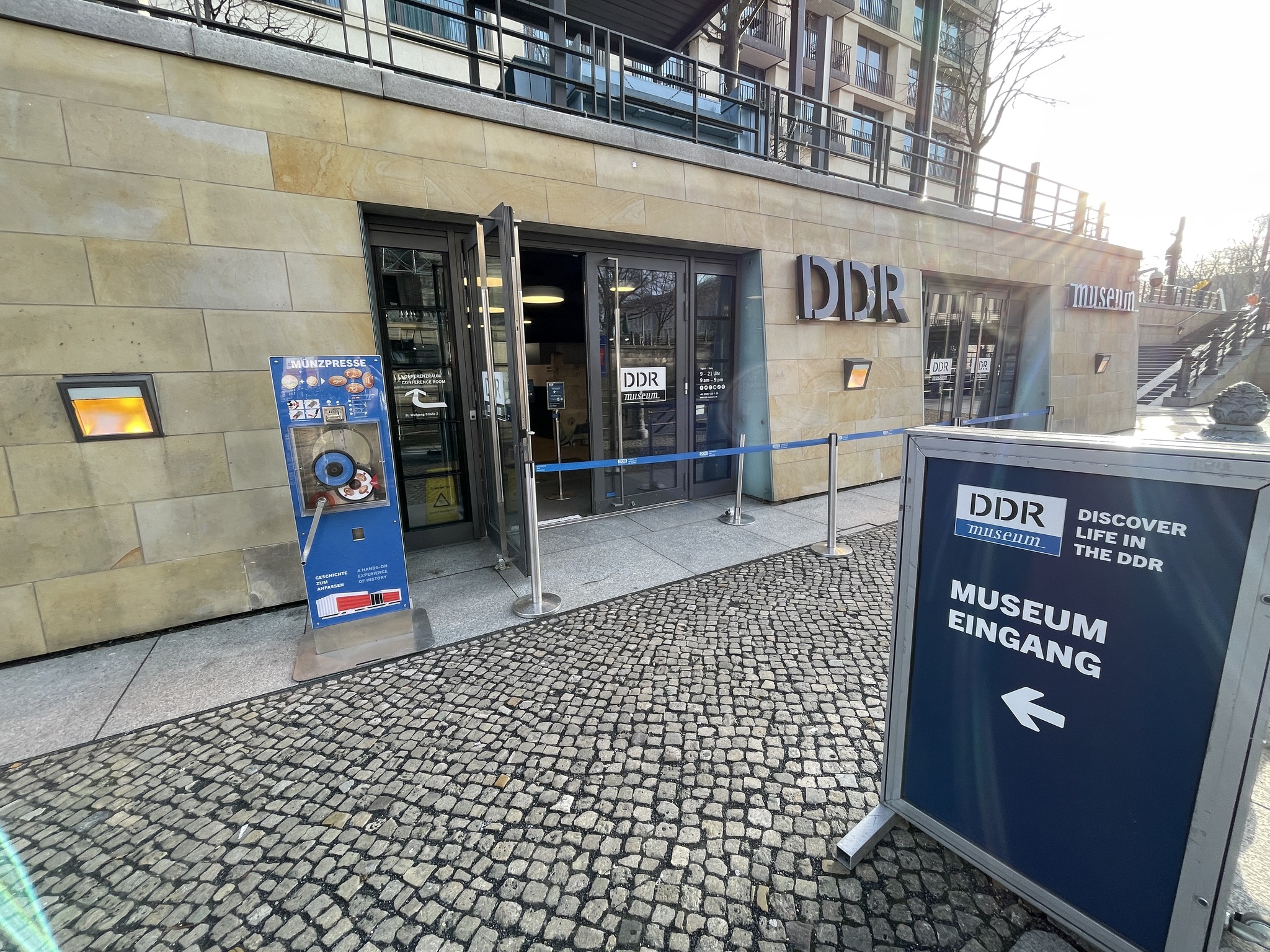
One of the most visited museums in Berlin shows what daily life in East Germany was like for its citizens. The museum is highly interactive and encourages visitors to immerse themselves, touch objects, and interact with exhibits.
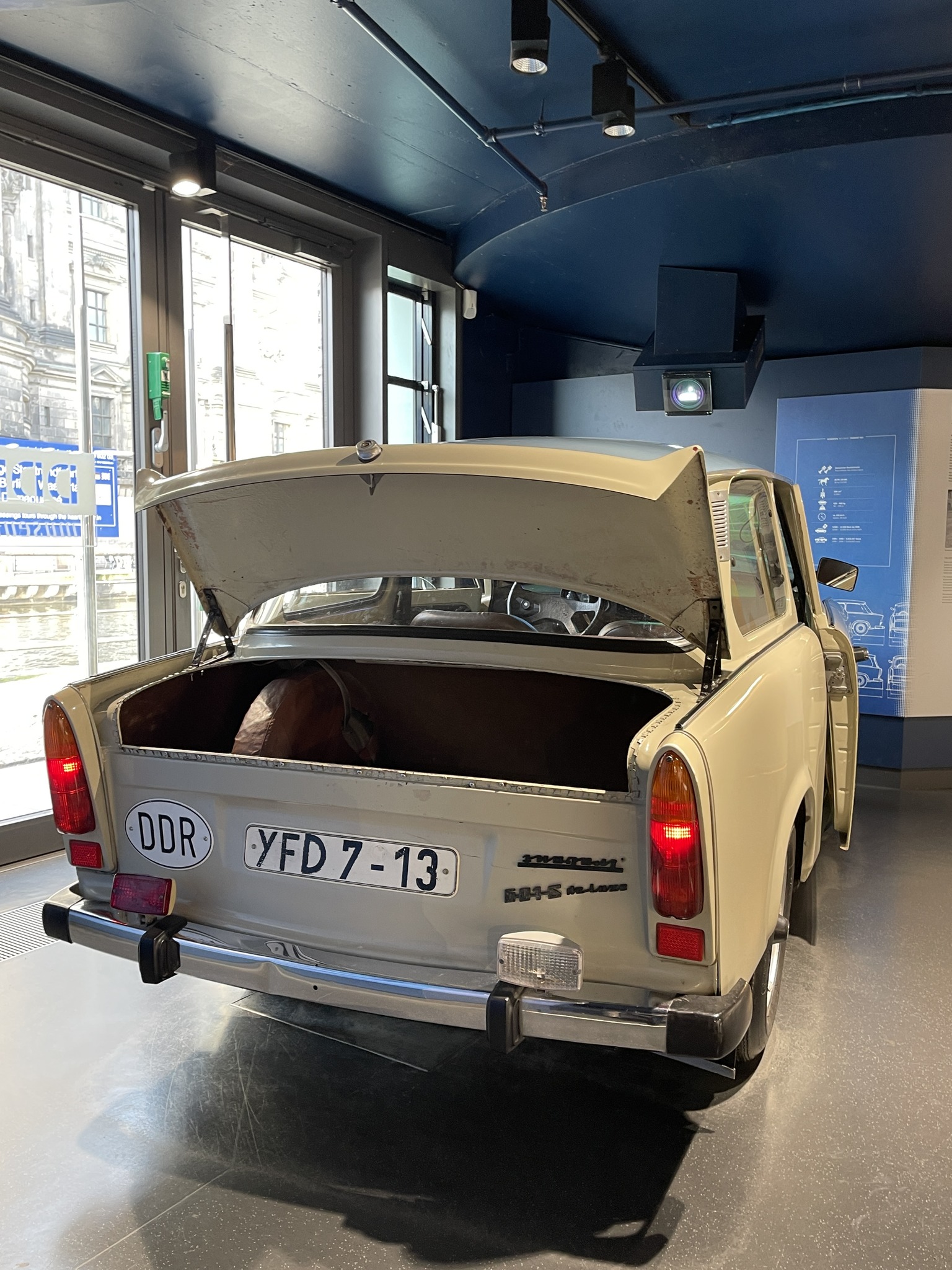
The highlights include a simulated drive in an original Trabant P601 car. Most significantly, there is a fully furnished reconstruction of a high-rise tower block flat with hundreds of original objects to discover.
There are three themed areas to explore: Firstly-Public Life«, Secondly-State and Ideology, and Thirdly- Life in a Tower Block
I Highly recommend this museum. However, go early to avoid the crowds.
Read on for more of Tracing Berlin’s Turbulent Past:
COLD WAR MUSEUM
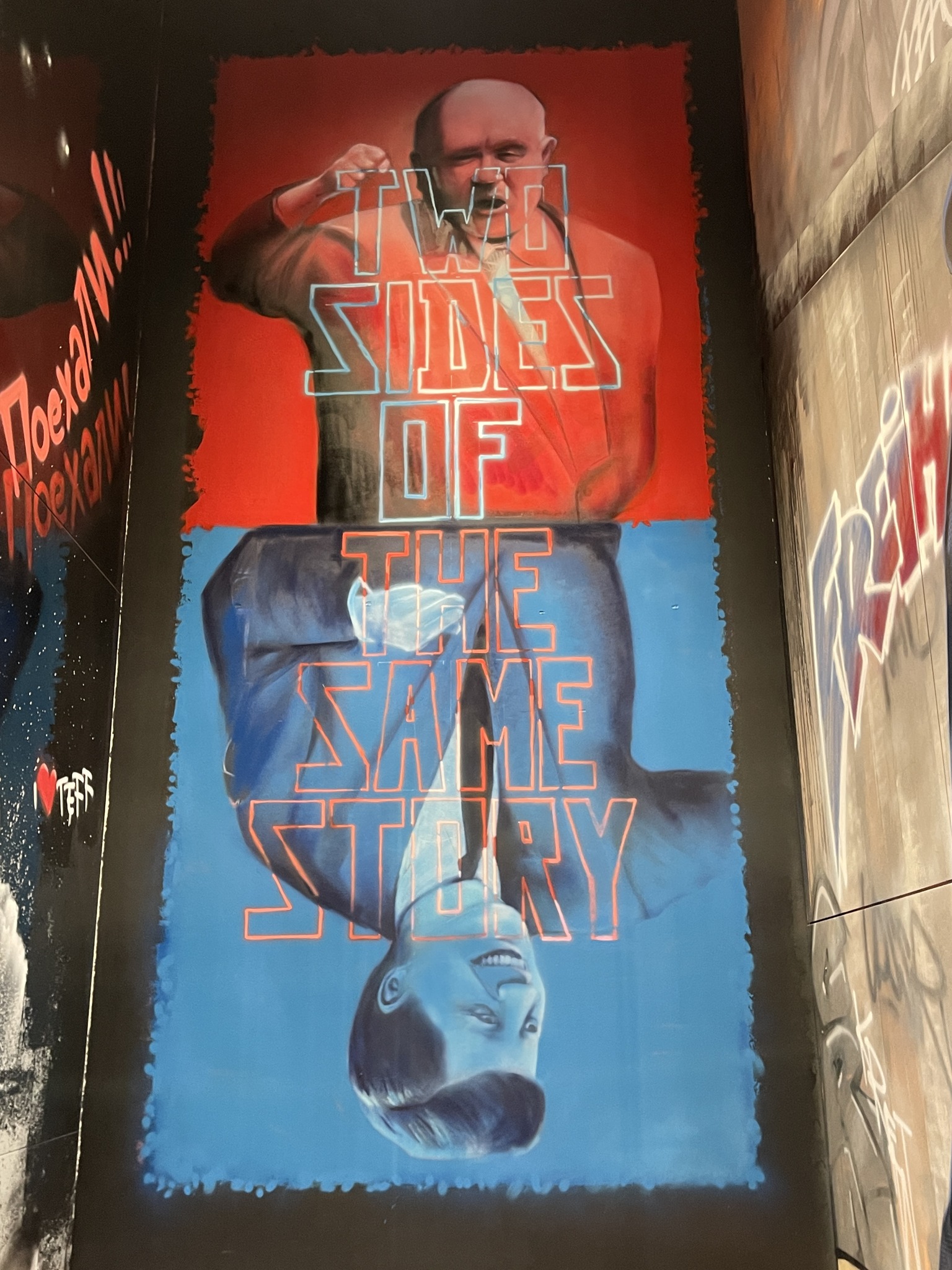
This is a fantastic museum documenting the Cold War from both sides. Extra points for the virtual recreation of East German Border Guard Konrad Schumann’s famous jump over the wall to freedom. The museum shows the international history of the Cold War and how this conflict has shaped people’s lives worldwide over four decades.

This museum’s goal is to present an objective fact-driven accounting of events during the Cold War. The interactive exhibits cover The Iron Curtain, Berlin as the capital of the Cold War, Secret Services 7 Operations, the Olympics, the Space Race, and the nuclear arms race.
All of the exhibition content is presented digitally, via touch-screen monitors, QR codes, VR, and AR. In addition, there are numerous impressive exhibits such as an S-75 anti-aircraft missile, and an original Olympic torch.
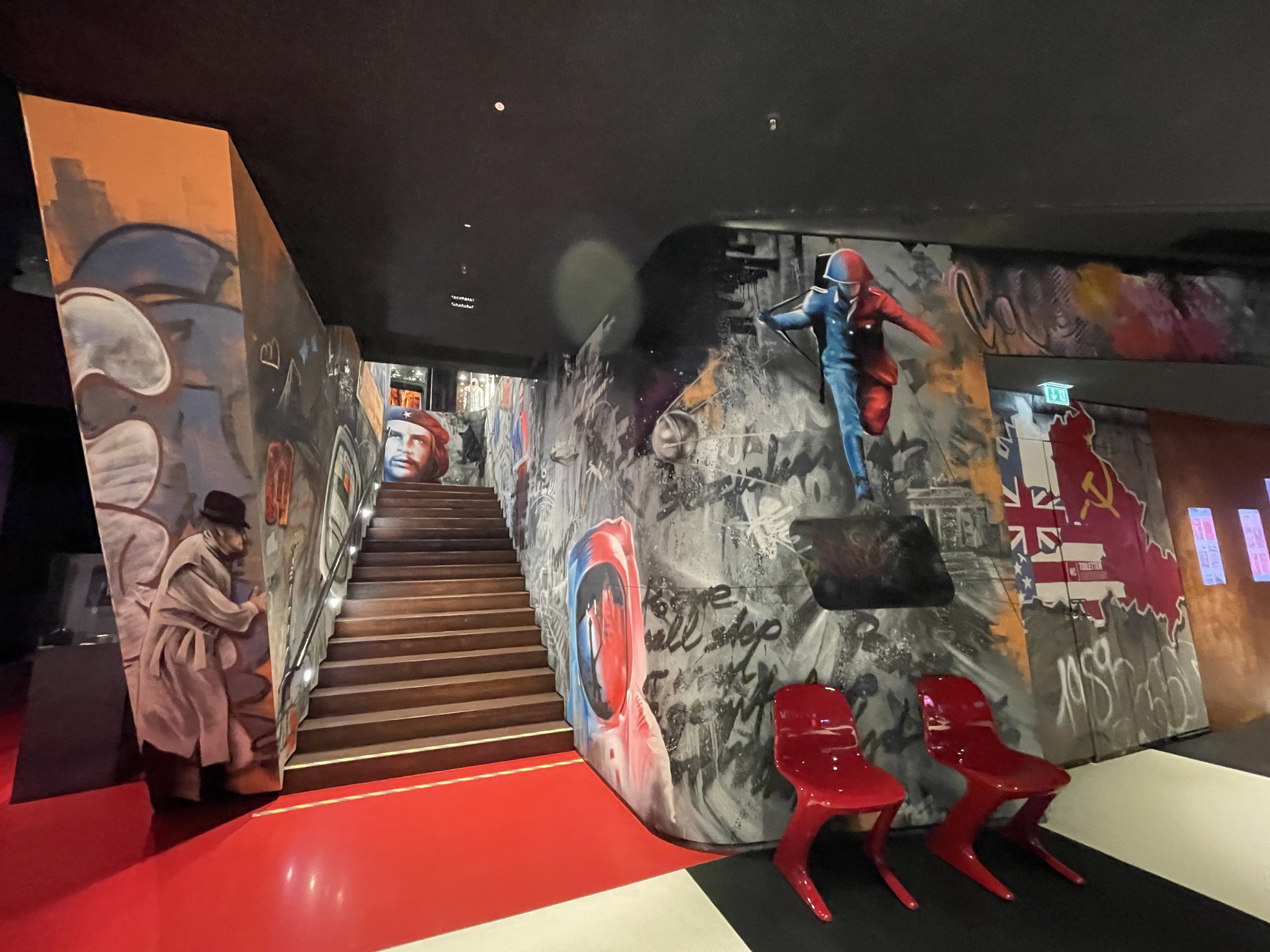
EAST SIDE GALLERY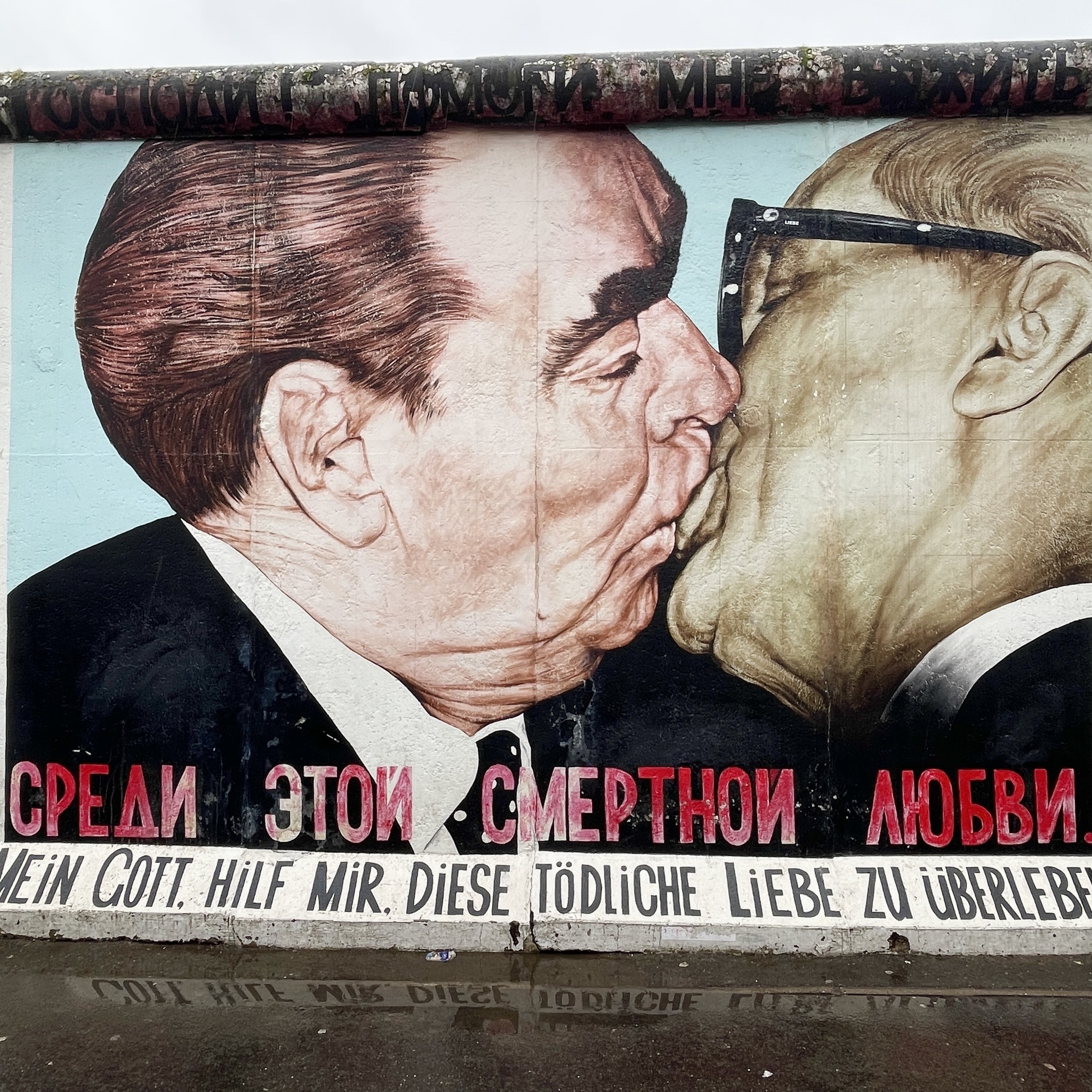
This is the longest remaining stretch of the Berlin Wall. This section on Mühlenstrasse is part of a 155-kilometer-long border that previously surrounded West Berlin.

“After the fall of the Berlin Wall, 118 artists from 21 countries created the longest open-air gallery in the world on 1.3 kilometers of the former border element. As a symbol of the joy of overcoming the division of Germany and at the same time as a historical testimony to the inhumane GDR border regime, the East Side Gallery is now one of the most visited tourist places in Berlin.”
The East Side Gallery stands both as a symbol of joy over the end of Germany’s division and as a historical reminder of the inhumanity of the GDR border regime.
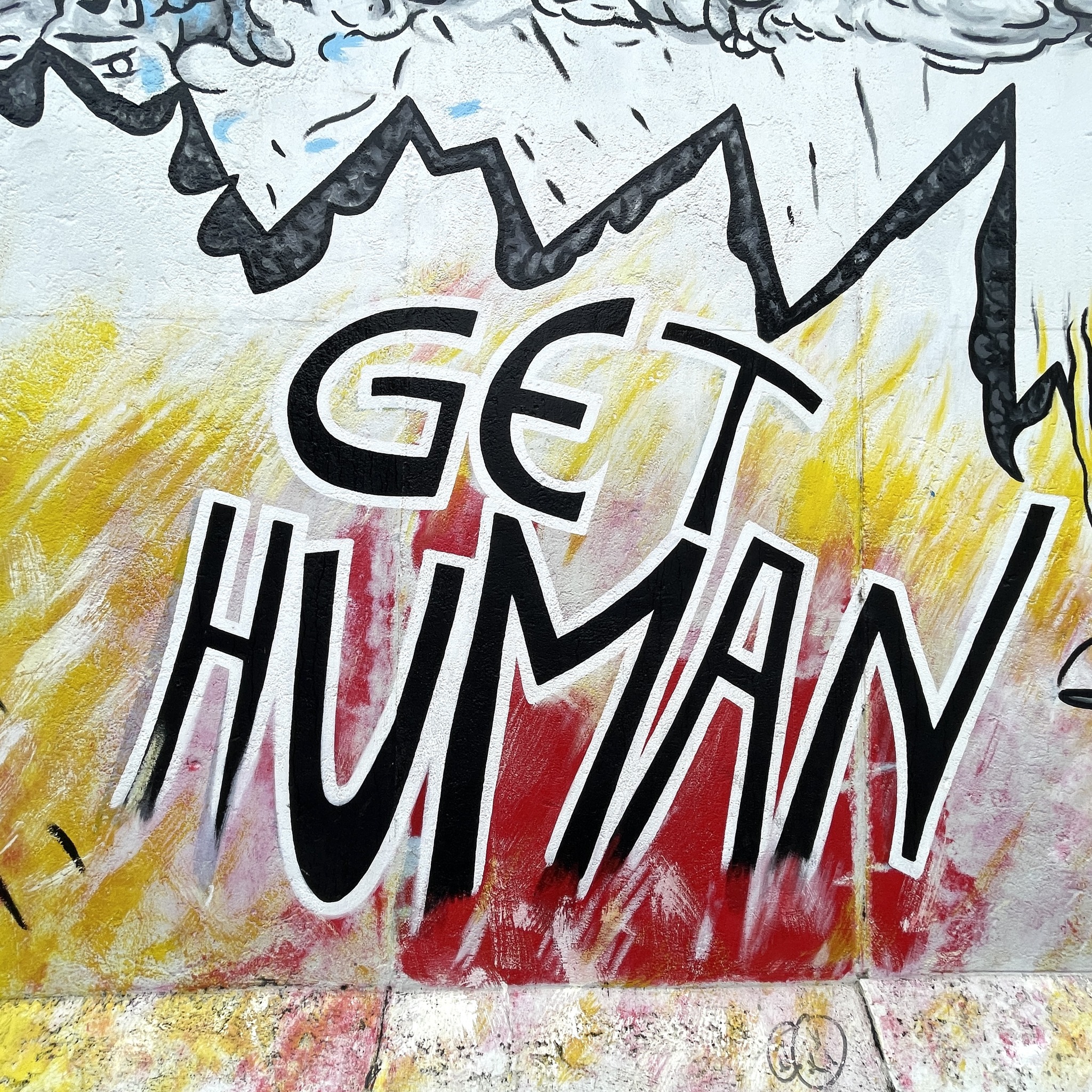
Beyond Tracing Berlin’s Turbulent Past – Here is an EXTRA TIP…

For a taste of Berlin’s most famous dish – head on over to Konnopke’s Imbiß. Since 1930 it’s Berlin’s most famous currywurst stand under the Magistrate’s Viaduct in Schönhauser Allee.
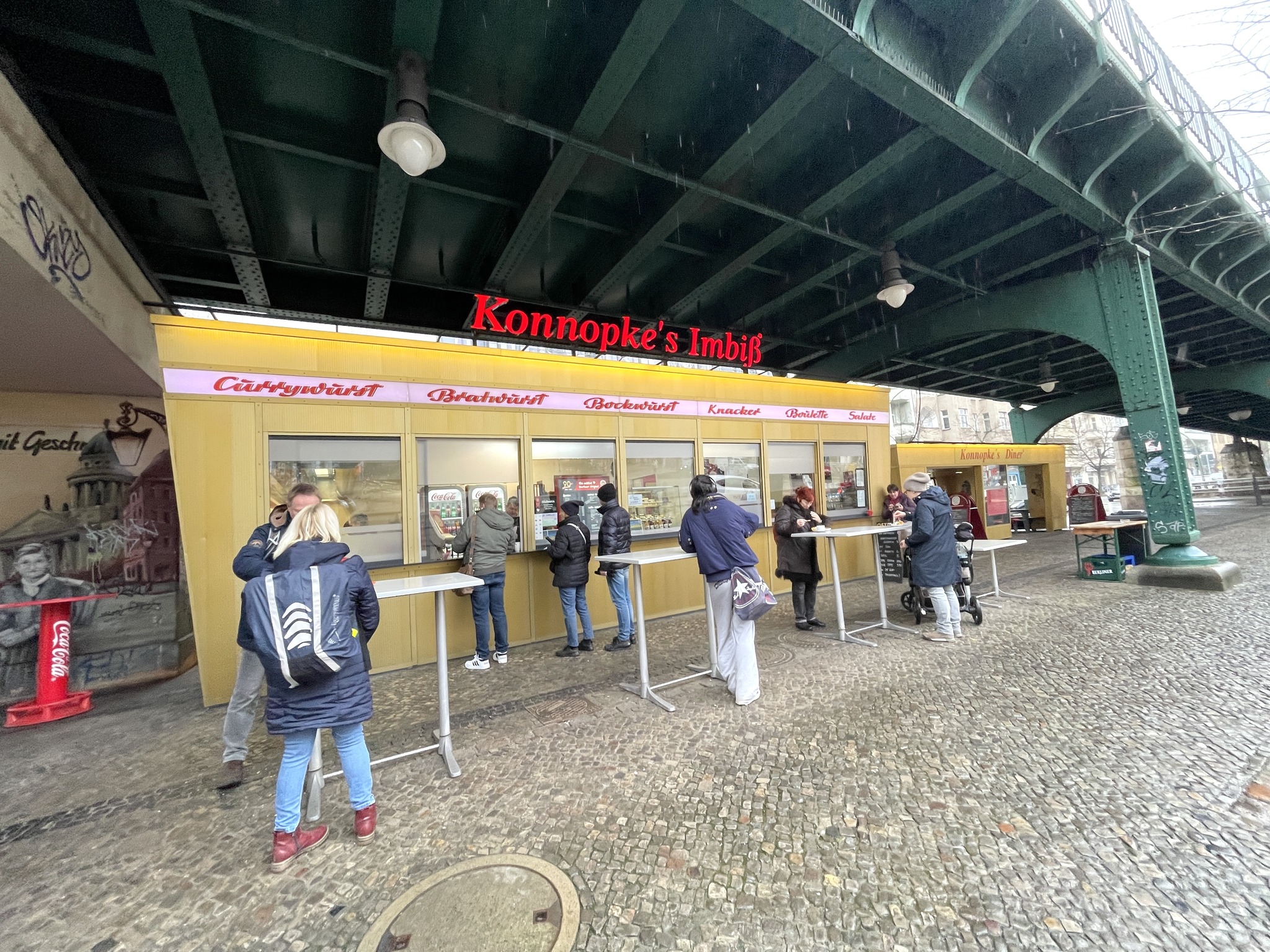
Like this Tracing Berlin’s Turbulent Past post? Check Out Some of These Other European City Destination Posts:


